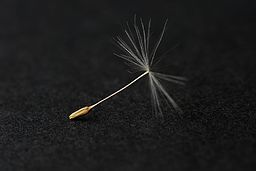For many years, I taught at the ALEPH Ordination Program, where I had, many years earlier, earned a rabbinic ordination. I did not go by “Rabbi” or “Reb.” My students sometimes used those titles, but not at my request.
I was then and remain now reactive to the idea so often promulgated in Renewal circles: that students need a “rebbe.”
Almost all of the students I taught were in their second careers. They were teachers, social workers, doctors, lawyers, psychologists, psychiatrists, political activists and so, so much more. They brought experience, wisdom, knowledge, and joy to the classroom. They were my emerging colleagues.
I did not walk into Jewish Renewal to find myself a “rebbe.” I was instantly wary of the term and of the peculiar glorification of the role. Those then so attached to the term had often been students Reb Zalman. They called him their “rebbe.”
They loved and honored their teacher and, it seemed, many owed him their Jewish lives. Many needed spiritual healing, and from what I could see, they felt he gave them that healing, that wholeness.
I cannot comment on their experience; only my own. What I met was a cadre of human beings who wanted to be rebbes.
A good number (not all) were charismatic individuals; powerful and passionate speakers, charming and witty service leaders. A talented bunch, for the most part.
And just as often capable of using their skills to attain admiration, affirmation, and adoration. I repeatedly saw leaders manipulate their followers in pursuit of those things. Some appeared to get regularly and emotionally drunk on the good feelings their students and congregants gave them about themselves.
Jewish Renewal does more than make a home for such leaders; it seeks them. The charismatic, the gifted, the powerful “rebbes” of Jewish Renewal are valued, admired. But the price their congregants or students pay for their leaders’ needs for affirmation, adoration, and “success” is not minor.
When unhealthy power imbalances govern spiritual relationships, emotional and psychological manipulation, coercion, and sexual harassment can follow. I have seen “spiritual intimacy” at work. I have seen it lead to the abandonment of healthy boundaries in favor of emotional dependency and even, sadly, abuse.
When I taught for one year in Taiwan, my students also had a name for me. They did not call me “Dr. Thiede” or “Professor Thiede.” They called me “Teacher.”
Over the past four decades, this was the only title I loved to hear. To teach is to guide, to hold, to nourish, to lift up. To teach is to learn; students are our colleagues in that endeavor.
We claim a “rebbe” is a teacher. But those we call “rebbe” have been enthusiastically invested with power that no teacher with a modicum of self-awareness would claim.
If Jewish Renewal could reconsider what it values in its spiritual leaders – if we valued ethics more than a lovely voice, a clever stage presence, a charming and spontaneous performance of liturgy – what titles would we choose? Any?





